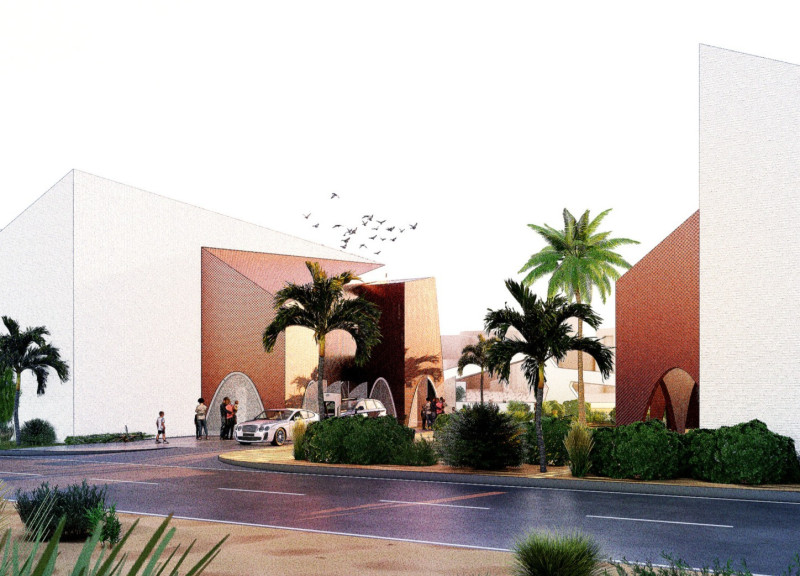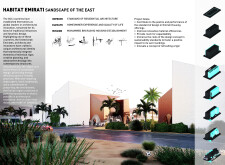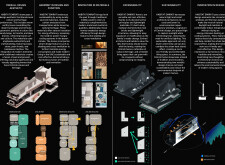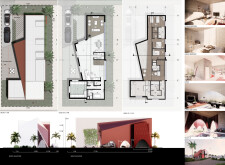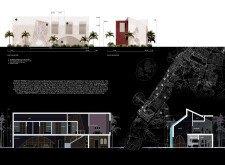5 key facts about this project
### Overview
Located in the United Arab Emirates, Habitat Emirati responds to the region’s socio-cultural context by merging traditional Emirati design principles with contemporary architectural practices. This residential project aims to elevate the standard of living for homeowners while reflecting the evolving needs of Emirati families. It emphasizes community, sustainability, and family life, addressing the dynamic urban environment of Abu Dhabi.
### Spatial Strategy and Functionality
The architectural form features a combination of fluid geometries and angular shapes that engage with the surrounding landscape. This design incorporates traditional arches alongside modern minimalist silhouettes, creating a harmonious visual experience. Interior spaces are thoughtfully crafted to encourage community interaction, with a focus on communal areas alongside private family settings. This layout seeks to foster a sense of belonging and support networks among residents, aligning with the cultural values of the Emirati community.
### Sustainable Design Initiatives
Habitat Emirati emphasizes sustainability through several innovative strategies. Passive design techniques prioritize cross-ventilation to enhance thermal comfort and reduce dependence on mechanical systems. The integration of solar panels and advanced insulation contributes to energy efficiency, while rainwater harvesting and greywater recycling systems promote responsible water management. The use of local materials such as terracotta, natural stone, and concrete not only supports regional economies but also optimizes the building's thermal performance in the UAE's climate.


